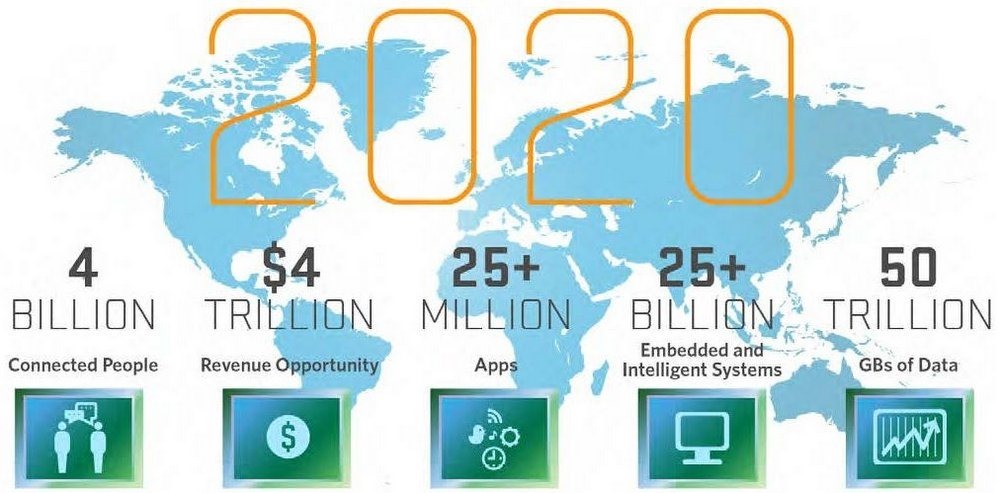Acche Din with IoT: How Internet of Things Will Revolutionize Our Lives

Indian cities have the biggest share in the nation’s GDP and generated employments for people but these cities have to undergo rapid urbanization to house thousands of families that migrate from around the state and from outside. There are many pressing issues for the city municipal and the state government that are to be addressed quickly around problems like housing, water shortage, traffic, healthcare etc.
Though policy change is the answer but without full-scale implementation, it bears no fruit. In the past we have seen many good policies failing to bring change in the situation because it wasn’t implemented properly or executed partially. Any policy will have maximum impact if every citizen and stakeholders are participating in it fully. Technology can play a very important role as it enables transparency and accountability. Furthermore these technologies will enable the policy makers to father and access a large amount of data to use as evidence for policy-making process. The one new emerging technology that can definitely bring the change required is “Internet of Things”.
Internet of Things or IoT as defined by TechTarget is – “The Internet of Things (IoT) is a system of interrelated computing devices, mechanical and digital machines, objects, animals or people that are provided with unique identifiers and the ability to transfer data over a network without requiring human-to-human or human-to-computer interaction.”
The uncomplicated part of this technology is machine-to-machine communication, which means the need for human intervention to insert or manipulate data is removed. But what would it mean to us, in context of making lives of common Indians better? Here is how we think; IoT is here to solve problems, even of a common man like us.
Energy Wastage and Water Shortage
There are already many IoT-based smart home automation products in the market that is helping people have a quality life. A smart home System connects all the appliances working in silos earlier, onto a control device which can be your mobile or computer via internet. Now you won’t have to worry about switching off your lights or closing all your windows while you are leaving home, because your smart home system would do it for you.
Watering your plants is not a chore anymore because the smart gardening system would detect moisture level in the soil and would supply precise amount of water to the plants. Your home will help you carry on your routine and in a way that saves your energy and water utility bills too. The city with smart home systems can drastically reduce their energy and water consumption and moreover, can analyze their usage patterns and tweak their habits for optimized and minimal usage.
Traffic Safety and Control
Internet of things is revolutionizing both personal and public transport systems for us.
The automobile and blue-chip companies are already investing in elevating experience with transportation by embedding connectivity in the newer models. In simple words, everything inside a car is wired together and connected with external systems over internet is changing the way we commute.
The driver can plug-in the phone and access features like route navigation, upcoming traffic congestion information, parking spaces availability, road side assistances, voice commands or car diagnosis.
The governments can regulate public transportation network as the exponentially growing population in metro cities uses different commute methods – metros, buses, taxis, private, cycle and footpaths for a single journey. A connected public transport system can be introduced using a chip-based paying cards and journey mapping facility.
A citizen can travel across the city without having to use cash and map his journey through different commute means for the day. This way the traffic control improves as every car personal or public is mapped and congestion patterns can be analyzed for understanding the root cause. This approach is far better than building flyovers and roads blindly with a bleak hope that one day traffic congestion would stop.
Healthcare Services
There are already smart wristwatches and Fitness wearable in the market. These wearables can be connected to a healthcare service provider, public or private. In case of an emergency situation like a heart-attack, victims will never be on mercy of strangers to find them help. The smart watch on their wrist will detect the anomaly will trigger a distress signal to the healthcare service connected system. Automatically an ambulance can be dispatched without the need of a phone call. The ambulance would follow the GPS pin of the patient using any map service. Elders and humans with special conditions can benefit a lot from such wearable diagnostics accessories. Their vitals and whereabouts can be monitored both by the family and assigned doctor from anywhere.
We think that IoT is the best fit for solving these challenges. The adoption rate of IoT-based devices would be much faster than any other technology products that have been ever created so far because the learning curve is almost zero. To use a smart fitness wristband all we need to learn is how to put the pin through the hole and rest of the things is taken care by the wristband.
Internet-of-Things is headed towards becoming an innate part of our lives and will sure bring us better lives than any other technology could have claimed before.
About the Author: Abhishek Porwal is CTO & President of DreamOrbit, a IOT based Logistics solution services provider
Image Source: Mario Morales, IDC

The biggest challenge for implementation is network not the availability of technology.